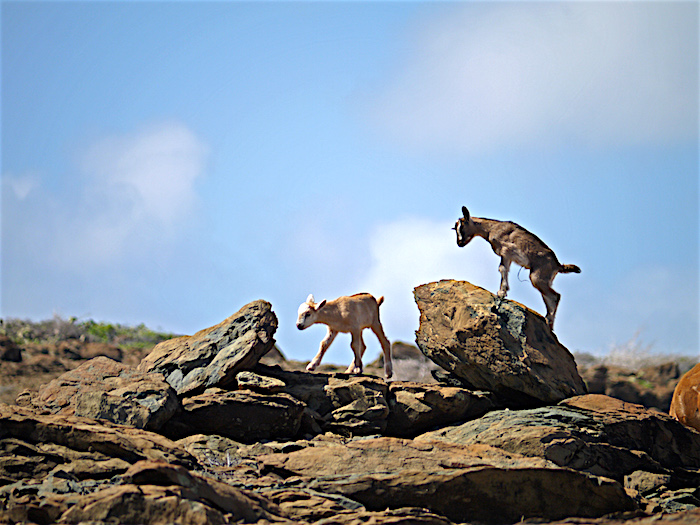My parents and I entered Aruba’s Arikok National Park in the early morning, intent on finding birds and beating the heat. Temperatures were already running high, and would continue to rise into the 80s and 90s by the end of the afternoon. Still, I felt too excited to care.
Aruba is dry, sloping hills covered in scrub and high cacti stretched to the sky like fingers. Near the ocean, great stone cliffs braced against the blue of the water, and giant boulders dotted the park’s landscape. We marveled at the tiny hummingbirds, the energetic grassquits, and, my favorite, the Venezuelan Troupials. These bright orange-black orioles are the national bird of Aruba, their golden eyes starting back at me from the top of a cactus spire.
Dreams for Arikok National Park percolated for decades before full realization. The national park idea began in the 1960’s, a plan presented in 1980, followed by a new one in 1995. Finally, in 1996 a commission was established, producing a management plan the next year. In 2000, Arikok was officially established. I visited 14 years later.
As we turned a trail corner in a brushy section near the visitor center, my parents and I heard a loud rustling in the undergrowth. I had been in Aruba for less than 48 hours, and I wracked my brain for what large animal could be shuffling within the borders of the park. Illogically, thoughts jumped to cougars, bears, wolves – obviously, none of these species exist on Aruba.
Approaching cautiously, we strode forward as silently as we could. Suddenly, the creature spooked, standing up on four thin legs and trotting down the trail: a goat!

Arikok National Park covers roughly 20 percent of Aruba/Erika Zambello
Arikok, which covers 20 percent of the country, has a lot of goats. According to a recent study, goat populations, estimated by counting fresh pellets, hover around 1,465 individuals.
As we explored, driving down towards the coastline, goats became more and more numerous. On a mountain of boulders, two baby goats – young enough that their string-like umbilical cords blew in the breeze – chased after each other’s tails. They were adorable, both bleating to anything and anyone who would listen.
Though they’re cute, these babies are also invasive. Goats were brought to the island during colonial times by the Spanish, and are still grazed by local people. They even form an important part of cuisine in the area, with goat stew a popular recipe.
In a New York Times article, Andrew C. Revkin writes that goats and donkeys, also brought by the settlers, “have disrupted the island’s ecosystem for so long that biologists can only guess what the landscape would look like without them.” In a research proposal published by Wageningen University, the author writes that the feral and domestic goats are overgrazing the park, decreasing species that can thrive here as well as plant cover as a whole, thereby causing erosion issues. In fact, habitat degradation is a threat to the very native birds I had journeyed to Arikok to find.
However, another study using nine sites throughout the park did not find a statistical difference between goat populations and changes in vegetation, leaving researchers scratching their heads and land managers without clear direction.
As an ecologist, my training tells me the goats should be removed, allowing the landscape to return to a more natural state. Yet, the empathetic piece of my heart feels sorry for the goats, merely trying to survive on a harsh landscape. More research is needed to test land management strategies, including complete removal and fencing. Only then can park staff move forward with effective natural resource management strategies.

How to deal with nonnative goats in Arikok National Park in Aruba is a vexing problem/Erika Zambello



 Support Essential Coverage of Essential Places
Support Essential Coverage of Essential Places






